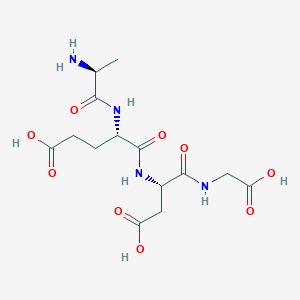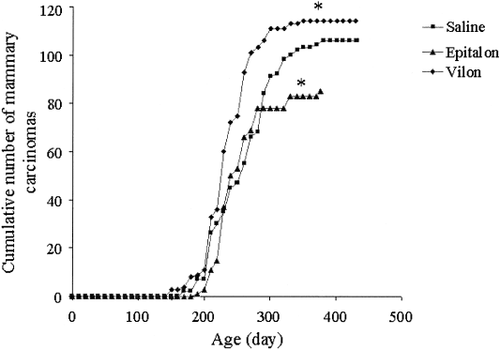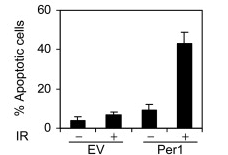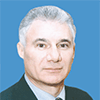











Product Usage: This PRODUCT IS INTENDED AS A RESEARCH CHEMICAL ONLY. This designation allows the use of research chemicals strictly for in vitro testing and laboratory experimentation only. All product information available on this website is for educational purposes only. Bodily introduction of any kind into humans or animals is strictly forbidden by law. This product should only be handled by licensed, qualified professionals. This product is not a drug, food, or cosmetic and may not be misbranded, misused or mislabled as a drug, food or cosmetic.
Epithalon (also known as Epitalon, Epithalone or Epithalamin) is a short synthetic peptide known to activate the telomerase enzyme and stimulate melatonin release. First developed in Russia in the 1980s, epithalon has been shown to delay age-related changes in reproductive and immune systems and increase the life span of mice and rats. Though it is primarily of interest in anti-aging research, epithalon has shown significant effects in certain types of cancer, infectious disease, and in DNA regulation.

Source: PubChem
Sequence: Ala-Glu-Asp-Gly
Molecular Formula: C14H22N4O9
Molecular Weight: 390.349 g/mol
PubChem CID: 219042
CAS Number: 307297-39-8
Early research using insects and rodents revealed that epithalon can prolong life substantially. In normal, healthy fruit flies and rats, epithalon decreases mortality by 52%. In mice prone to both heart disease and cancer, epithalon prolongs life by as much as 27% compared to controls[1]. At least part of the answer to how epithalon achieves these profound effects is via its elimination of free radicals (charged molecules that do damage to healthy tissue).
Anti-oxidant activity is not the only reason that epithalon extends life, however. There is good evidence from in vitro experiments on human somatic cells to show that epithalon activates an enzyme called telomerase[2]. Telomerase protects telomeres, the ends of chromosomes that are critical to ensuring the health of DNA. Epithalon’s activation of telomerase leads directly to a decrease in how many errors a strand of DNA contains, supporting the notion that epithalon protects DNA from damage[3], [4]. In short, epithalon protects DNA from accumulating errors over time, a process that eventually leads to cell dysfunction, aging, and even cancer in some cases.
Neither its impact on free radicals nor its effects on telomeres seem sufficient to explain the profound effects that epithalon has on longevity. Indeed, scientists are working hard to understand how this short peptide achieves the effects that it does so that the mechanisms can be explored in depth. As it turns out, at least part of the answer may come from the fact that epithalon changes the expression of certain genes.
Research in cell cultures shows that epithalon interacts directly with DNA to turn on and enhance the expression of certain genes. Epithalon interacts with the promoter regions of genes for CD5, IL-2, MMP2, and Tram1[5]. CD5 and IL-2 both affect the function of the immune system while MMP2 plays a critical role in the maintenance of extracellular matrix in skin, tendons, and other connective tissue. These findings suggest that epithalon may impact the function of the immune system and the ability of the body to heal itself following not only injury, but following typical day-to-day stress as well.
It is not surprising that epithalon impacts the immune system. Research in rats indicates that epithalon boost the expression of interferon gamma in aging lymphocytes[6]. Interferon gamma is a critical signaling molecule in the immune system. It is important for fighting off viral infections through the activation of macrophages, natural killer cells, and T cells.
The following are known DNA interactions of epithalon:As stated above, epithalon has a positive effect on the gene that regulates MMP2. MMP2 is a protein found in connective tissue like skin. Research in rodents indicates that not only does epithalon activate this gene, it activates fibroblasts, the cells that produce and maintain MMP2 as well as other components of the extracellular matrix like collagen and elastin. Mice exposed to epithalon show an increase in fibroblast activation of 30-45%[7]. By activating fibroblasts, epithalon can help to boost rates of healing and offset the natural decline in skin structure and integrity that occurs with aging.
Further evidence for epithalon’s benefit in skin comes from the fact that it decreases caspase-3 activity. Caspase-3 is an enzyme in the apoptosis or programmed cell death pathway. By decreasing caspase-3 activity, epithalon helps to protect fibroblasts and other skin cells, keeping them alive and healthy for longer periods of time[8].
Daily administration of epithalon to rats with cancer has been found to decrease tumor growth[9]. Not only does the peptide reduce tumor growth, it prevents the metastasis or spread of these tumors to distant tissues as well[10], [11]. Epithalon is currently being investigated as a potential treatment for Her-2/neu positive breast cancers and is of interest in preventing the development of certain types of leukemia as well as testicular cancer[12], [13].

Slowed tumor growth in mice exposed to epithalon compared to controls
Source: Wiley Online Library
There is some evidence that epithalon activates the gene for PER1 protein, which is found in the hypothalamus. PER1, which helps to regulate circadian rhythm, is under-expressed in cancer patients. It is unclear if this under-expression precedes cancer development and therefore contributes to cancer growth or is a consequence of cancer development. It is clear that the protein affects cancer growth once the cancer is established. Control of PER1 expression may be one means of naturally slowing tumor growth. Research shows that PER1 expression sensitizes cells to the effects of radiation and may therefore help to decrease the doses of radiation needed to treat certain cancers, a fact that would not only offset immediate side effects, but reduce the occurrence of secondary tumors following high doses of radiation[14].

PER1 Causes Increased Rates of Ionizing Radiation-Induced Cell Death
Source: Molecular Cell
Melatonin, which is linked to sleep and aging, is produced by the pineal gland. Research in rats shows that epithalon and similar peptides affect both the synthesis and release of melatonin by affecting the expression of two proteins (arylalkylamine-N-acetyltransferase (AANAT) and pCREB transcription protein)[15].Both of these genes play an important role in melatonin production and in the circadian (day/night) control of melatonin release. Research in monkeys indicates that epithalon restores melatonin secretion to normal[16].
A trial in rats suffering from retinitis pigmentosa found that epithalon improves outcomes in 90% of patients[17]. It appears that the peptide helps to preserver normal structure of the eye while boosting the bioelectric function of the retina necessary for vision.
Epithalon exhibits minimal side effects, low oral and excellent subcutaneous bioavailability in mice. Per kg dosage in mice does not scale to humans. Epithalon for sale at Peptide Sciences is limited to educational and scientific research only, not for human consumption. Only buy Epithalon if you are a licensed researcher.
The above literature was researched, edited and organized by Dr. Logan, M.D. Dr. Logan holds a doctorate degree from Case Western Reserve University School of Medicine and a B.S. in molecular biology.

Prof. Vladimir Khavinson is being referenced as one of the leading scientists involved in the research and development of Epitalon. In no way is this doctor/scientist endorsing or advocating the purchase, sale, or use of this product for any reason. There is no affiliation or relationship, implied or otherwise, between Peptide Sciences and this doctor. The purpose of citing the doctor is to acknowledge, recognize, and credit the exhaustive research and development efforts conducted by the scientists studying this peptide. Prof. Vladimir Khavinson is listed in [1] [2] [5] [6] [7] [9] [12] [13] [15] and [17] under the referenced citations.
ALL ARTICLES AND PRODUCT INFORMATION PROVIDED ON THIS WEBSITE ARE FOR INFORMATONAL AND EDUCATIONAL PURPOSES ONLY.
The products offered on this website are furnished for in-vitro studies only. In-vitro studies (Latin: in glass) are performed outside of the body. These products are not medicines or drugs and have not been approved by the FDA to prevent, treat or cure any medical condition, ailment or disease. Bodily introduction of any kind into humans or animals is strictly forbidden by law.





